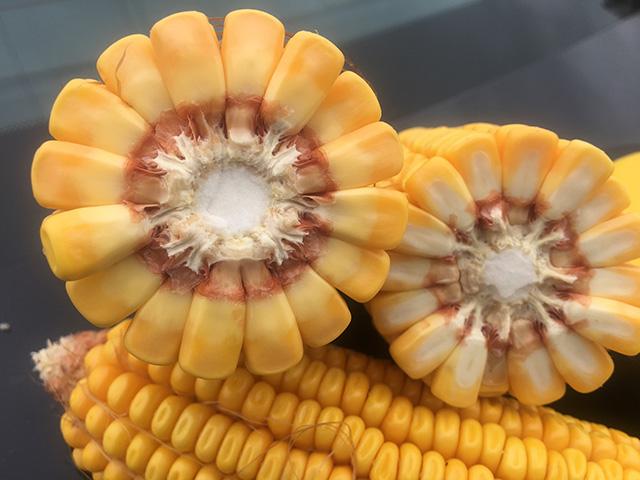Cash Market Moves
2020 Corn Crop Graduates at the Top of the Class
The 2020 U.S. Grains Council (USGC) Corn Harvest Quality Report reflected the test results of 601 samples collected from inbound farm-originating trucks at harvest within 12 of the top corn producing and exporting states. Inbound samples collected were measured and analyzed for quality at the point of origin and provided representative information about the variability of the quality characteristics across the diverse geographic regions, noted USGC.
USGC said that, "the 2020 crop was planted slightly ahead of the average pace of the previous five crops and experienced generally favorable conditions during the remainder of the growing season, resulting in a corn crop with both high grain quality and yield."
The average aggregate quality of the representative samples tested for the report showed that 84.7% of the samples met the grade factor requirements for U.S. No. 1 grade and 94.5% met the grade factor requirements for U.S. No. 2, noted USGC. At 58.7 pounds per bushel, the 2020 crop was a success compared to the 2019 crop that suffered from lower test weight of 57.3 pounds per bushel on average, while some states in the Upper Midwest were below 54 pounds.
The quality of the 2019 crop was impacted in that area by late planting, delayed maturation, kernel filling and late harvest conditions that caused high corn moisture, low test weight and other downgrades. The high moisture led to the need for more heated-air drying, causing the corn to be handled more than the norm, which in turn caused more cracked kernels, causing another serious quality issue.
P[L1] D[0x0] M[300x250] OOP[F] ADUNIT[] T[]
The lower test weight corn and broken kernels in 2019 created a big challenge for exporters. Many elevator merchandisers told me earlier this year that, while the lower test weight corn found a home at many U.S. ethanol plants, exporters struggled to make a No. 2 yellow corn grade for export to countries that demand that grade, which is a minimum 54 pounds. Export basis was strong to the Pacific Northwest for No. 2 yellow corn and discounts for No. 3 yellow corn, a minimum of 52 pounds, ran between 5 cents to 15 cents.
The other issue in the 2019 crop was the high content of Broken Corn and Foreign Material (BCFM) with the maximum allowed for No. 2 yellow corn at 3% BCFM and No. 3 yellow corn at 4% BCFM. Needless to say, it was a challenging crop for farmers and exporters who had to deal with it until the 2020 harvest. USGC noted that the BCFM was lower than average in the 2020 crop and 98.5% of the samples were at or below the limit for U.S. No. 2 grade.
These grade factors, along with test weight and BCFM, came in better than the five-year average with moisture average at 15.8% and total damage at 1.1%. USGC reported that, in addition, 100% of the samples tested below the 5.0 parts per million U.S. Food and Drug Administration (FDA) advisory level for deoxynivalenol (DON or Vomitoxin). The proportion of samples lower than the Federal Grain Inspection Service (FGIS) conformance limit for DON (0.5 parts per million) was 82.2%, which was higher than 2019 and 2018(59.9% and 74.6%, respectively).
All but one of the samples tested (99.4%) below the FDA action level (20.0 parts per billion) for aflatoxins. The proportion of samples lower than the FGIS lower conformance limit for aflatoxin (5.0 parts per billion) was also 99.4%, which was higher than 2019 and 2018 (98.9% and 97.8%, respectively), according to the report.
"Relative to each quality factor's average of the previous five crops, the 2020 U.S. corn crop is entering the market channel with a higher average test weight and lower moisture and total damage," said USGC.
Producing a sound, high quality crop in 2020 was perfect timing because corn exports have been surging. As of Dec. 3, U.S. corn export commitments now total 1.561 billion bushels in 2020-21 and are up 156% versus one year ago. The size of export demand continues to keep the corn basis strong, and so far in this crop year, the national average weekly corn basis for the second week of December is sitting above the DTN five-year strongest basis and 15 cents stronger than the DTN five-year average at 17 cents under the March contract.
In addition to the harvest quality report, a second USGC report, the 2020-21 Corn Export Cargo Quality Report, will measure corn quality at export terminals at the point of loading. That report will be available in early 2021.
Mary Kennedy can be reached at mary.kennedy@dtn.com
Follow her on Twitter @MaryCKenn
(c) Copyright 2020 DTN, LLC. All rights reserved.




